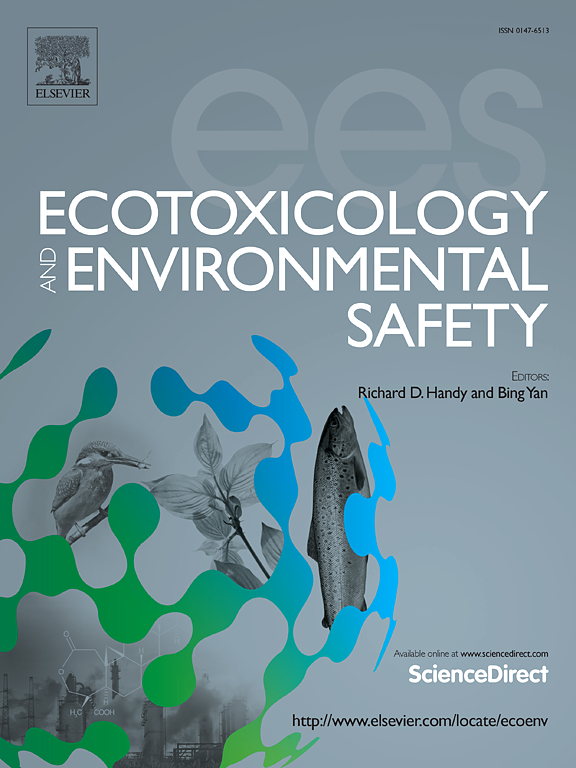Combined effects of co-exposure to microcystin-LR and polystyrene microplastics on growth, brain pathology and thyroid hormone homeostasis in adult zebrafish
IF 6.2
2区 环境科学与生态学
Q1 ENVIRONMENTAL SCIENCES
引用次数: 0
Abstract
The concurrent presence of algal blooms and microplastics pollution in natural water bodies poses a novel threat. However, the joint effects of microcystin-LR (MCLR) in combination with polystyrene microplastics (PSMPs) on the thyroid endocrine system of adult fish remains unclear. In our study, male zebrafish (Danio rerio) were exposed to environmentally relevant concentrations of MCLR alone (0, 0.8, 4, 20 μg/L) and a mix of MCLR and PSMPs (100 μg/L) for 60 days. Alterations in brain histology, thyroid hormone (TH) levels, and the transcription levels of hypothalamic-pituitary-thyroid (HPT)-axis genes were used to assess the thyroid function. In the MCLR-only treatment groups, we observed mild brain tissue damage characterized by glial scarring and hyperemia. The presence of PSMPs exacerbated the brain damage cause by MCLR, resulting in more pronounced ventriculomegaly and hyperemia. No significant changes in whole-body thyroxine (T4) and triiodothyronine (T3) levels were observed in the MCLR-only groups, while a significant decrease was noted in the groups co-exposed to MCLR and PSMPs. Additionally, significant alterations in crh, tshβ, ttr , trα, and trβ expression levels in the combined exposure groups provided further confirmation that MCLR and PSMPs jointly cause thyroid endocrine disruption. Our findings suggest that the fish can trigger a compensatory mechanism to maintain thyroid hormone homeostasis in response to environmentally relevant concentrations of MCLR. However, the presence of PSMPs disrupts this self-regulatory equilibrium, thereby exacerbates the thyroid endocrine disruption cause by MCLR in zebrafish.
求助全文
约1分钟内获得全文
求助全文
来源期刊
CiteScore
12.10
自引率
5.90%
发文量
1234
审稿时长
88 days
期刊介绍:
Ecotoxicology and Environmental Safety is a multi-disciplinary journal that focuses on understanding the exposure and effects of environmental contamination on organisms including human health. The scope of the journal covers three main themes. The topics within these themes, indicated below, include (but are not limited to) the following: Ecotoxicology、Environmental Chemistry、Environmental Safety etc.

 求助内容:
求助内容: 应助结果提醒方式:
应助结果提醒方式:


